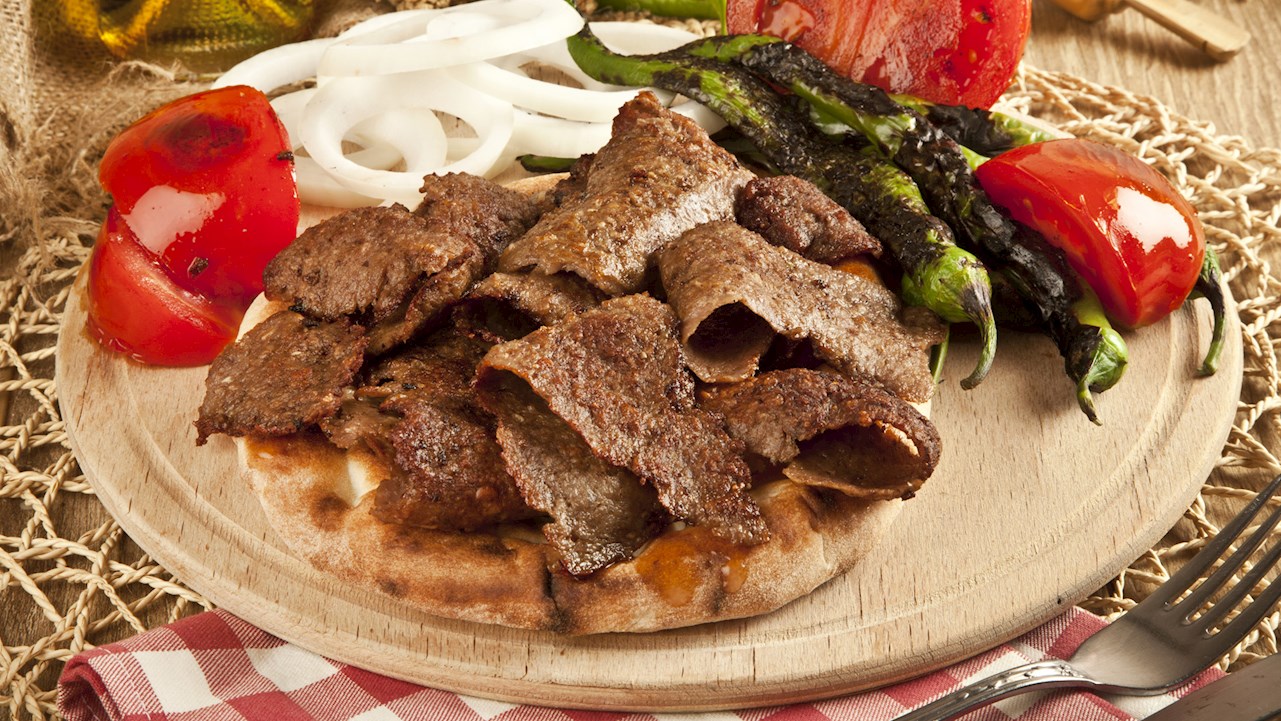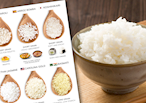A dish with a very murky history, döner kebab was supposedly invented in the 17th century Ottoman Empire and slowly developed into its present-day form over time. It was also the basis for other similar dishes, like the Lebanese shawarma, the Mexican tacos al pastor, and the Greek gyros.
What is döner kebab?
A large hunk of beaten pieces of meat cooked on a vertical spit, i.e., döner kebab, is one of Türkiye’s best-known exports.
Lamb is the traditional choice, but a combination of beef and lamb is the norm today. Still, beef and chicken are extremely popular with locals as well.
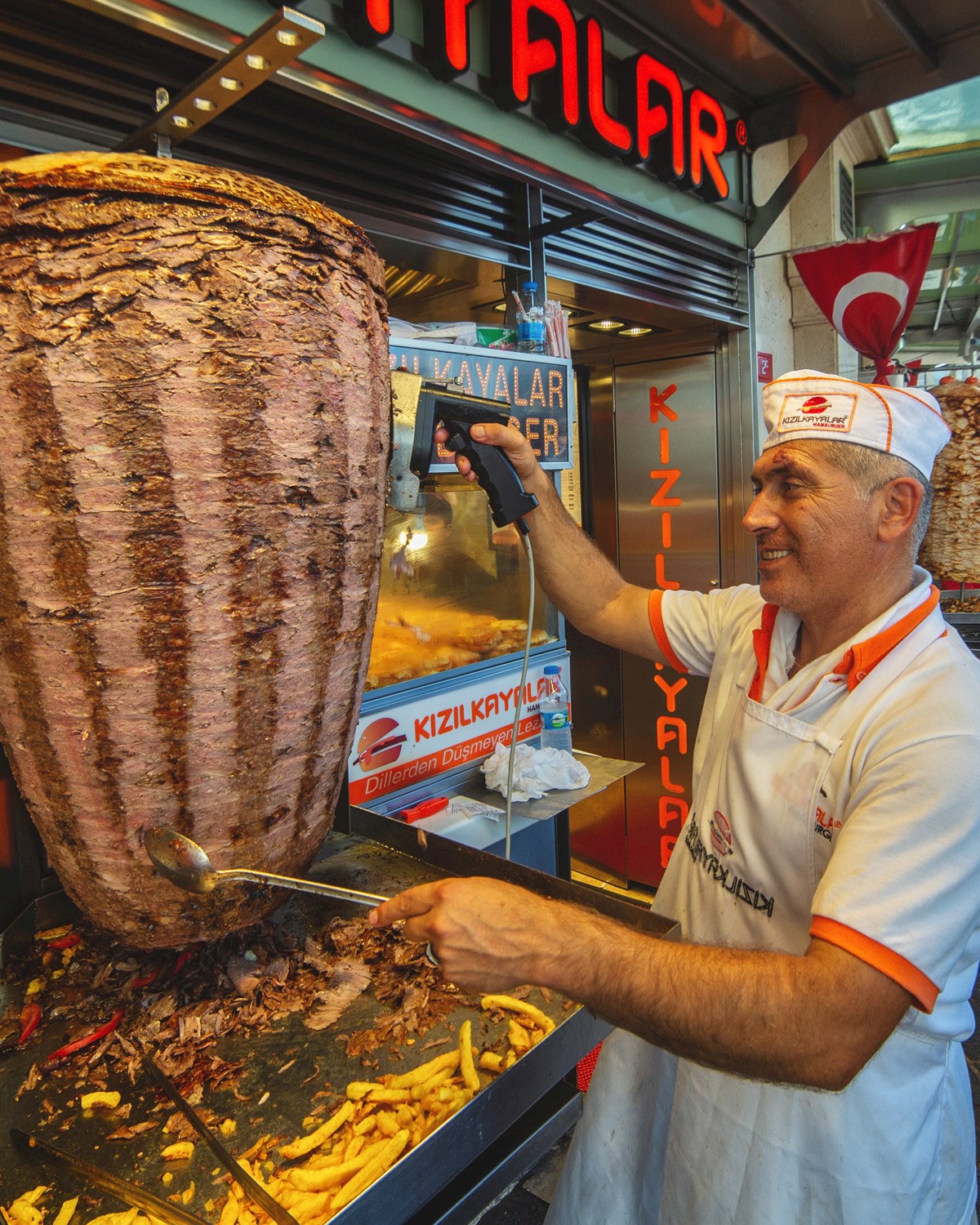 Credits: shutterstock
Credits: shutterstock
The meat is mixed with suet, herbs, and spices. As the outside of the meat cooks, it is shaved off, and the slivers are then served to the customers in a myriad of different ways.
Types of Turkish döner
Türkiye (the new official name of Turkey) boasts a plethora of döner kebab variations, and they vary by the type of meat and the way that meat is served.
Serving meat slivers atop pide bread or rice pilaf is the traditional way of going about it. A side of vegetables, typically grilled peppers, tomatoes, and onions, accompanies the dish.
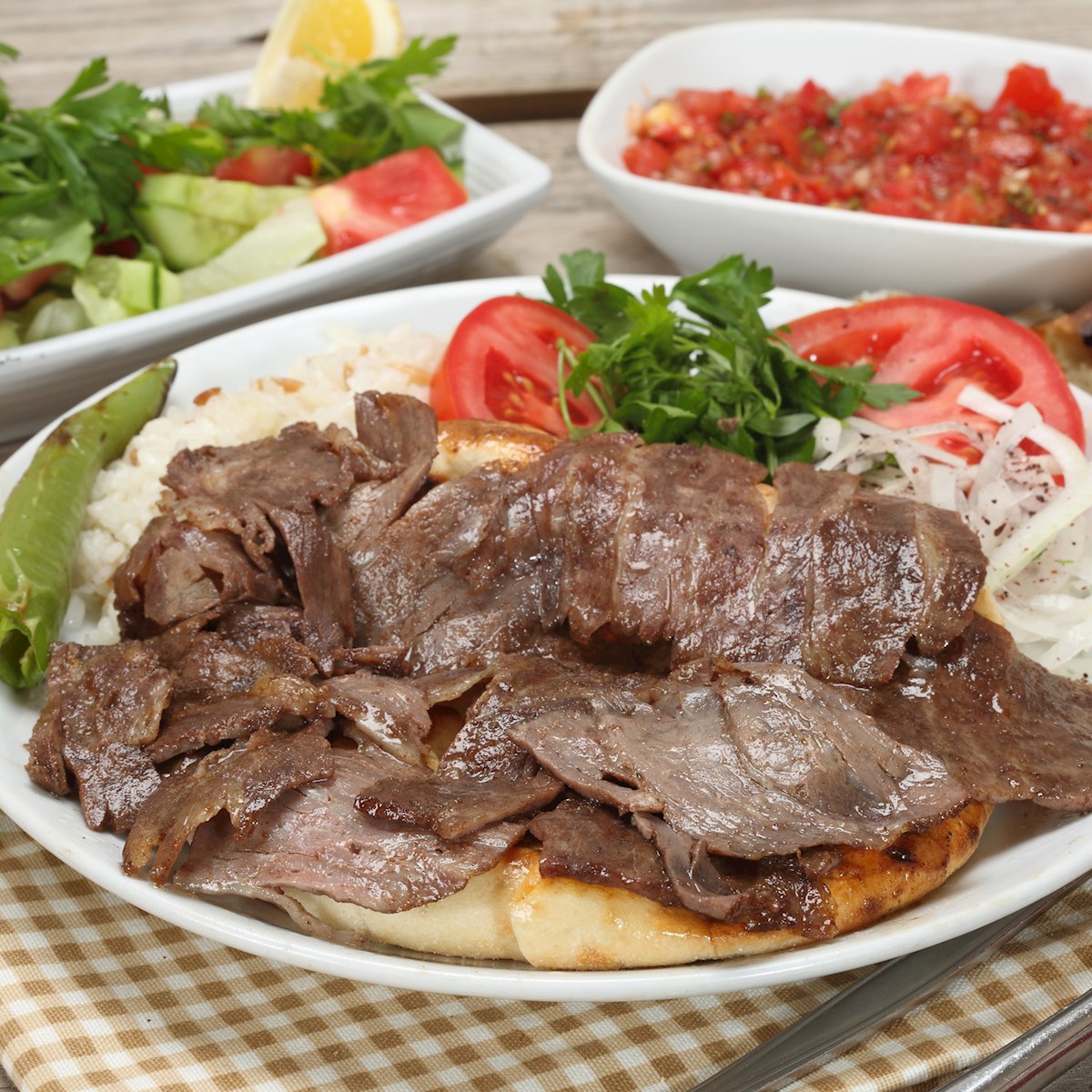 Credits: shutterstock
Credits: shutterstock
There are also handheld versions. The döner meat can be wrapped in a tortilla-like lavaş or tucked between either two pieces of bread or a pide bread, a version known as tombik. Vegetables, sauces, and cheese, depending on the type, are a part of each rendition.
And finally, there’s the Bursa specialty, Iskander kebap. Döner meat is placed atop pieces of pide bread and poured over with a tomato sauce and hot sheep’s milk butter.
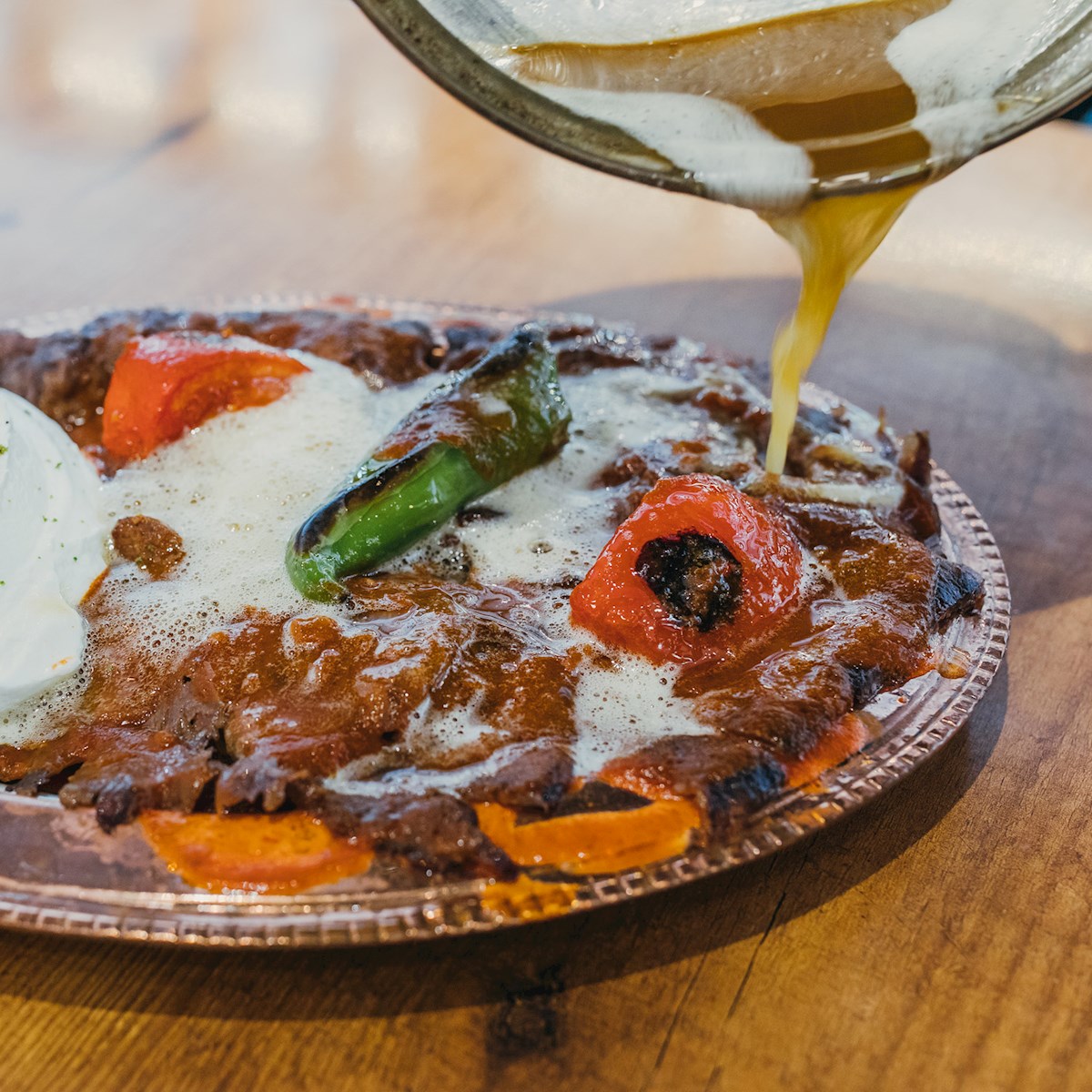 Credits: shutterstock
Credits: shutterstock
So, what’s Germany got to do with it?
In the post-World War II era, Germany was in need of workers and decided to invite people from the outside to increase its workforce. The majority of those guest workers ended up being Turkish, and today, Germany is the country with the largest Turkish population outside Türkiye.
Naturally, along with people came their food and their culture.
So, most likely, the German döner kebap was invented in 1972 by the Turkish immigrant Kadir Nurman who at the time ran a food stall at the Berlin Bahnhof Zoo. He noticed that many workers needed a quick bite on the go as they had no time to waste. So, he got the idea to pack the döner meat and onion slices into a flatbread. That’s it, as simple as that!
The quick bite soon started gaining a following. Initially, it was the Turkish immigrants who took a liking to it, as it was similar to what they had in their home country.
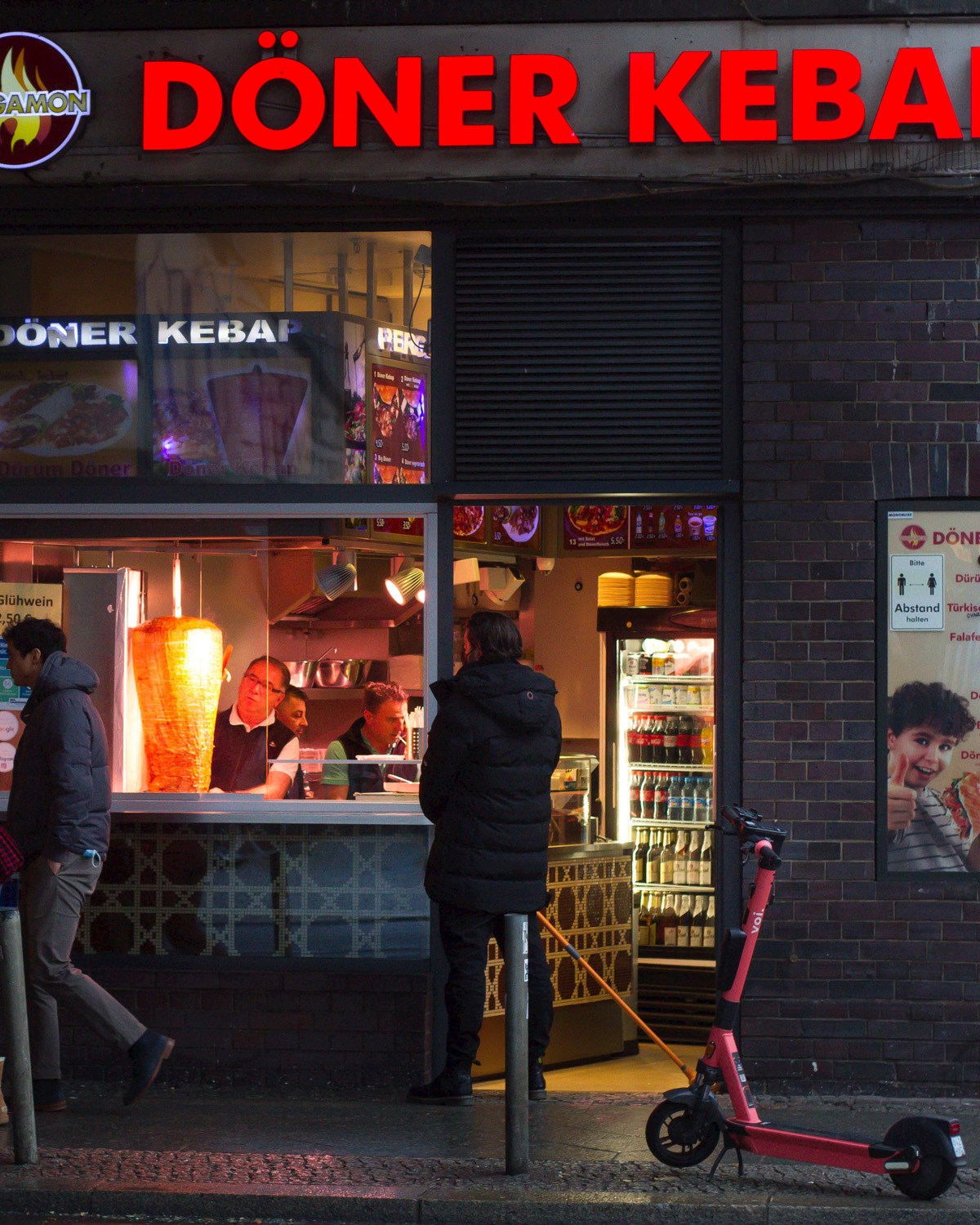 Credits: shutterstock
Credits: shutterstock
But it started to gain traction, and Germans started to become more and more his frequent customers. Soon after, döner kebab very quickly became an immense success and began spreading like wildfire.
Today, there are thousands of döner kebab joints in Germany, and the döner kebab in Germany alone is a business worth billions of euros. Also, there’s been a few other changes. The döner kebab of Kadir Nurman is long gone. Today, döner kebab is not a sandwich anymore; it’s a full meal.
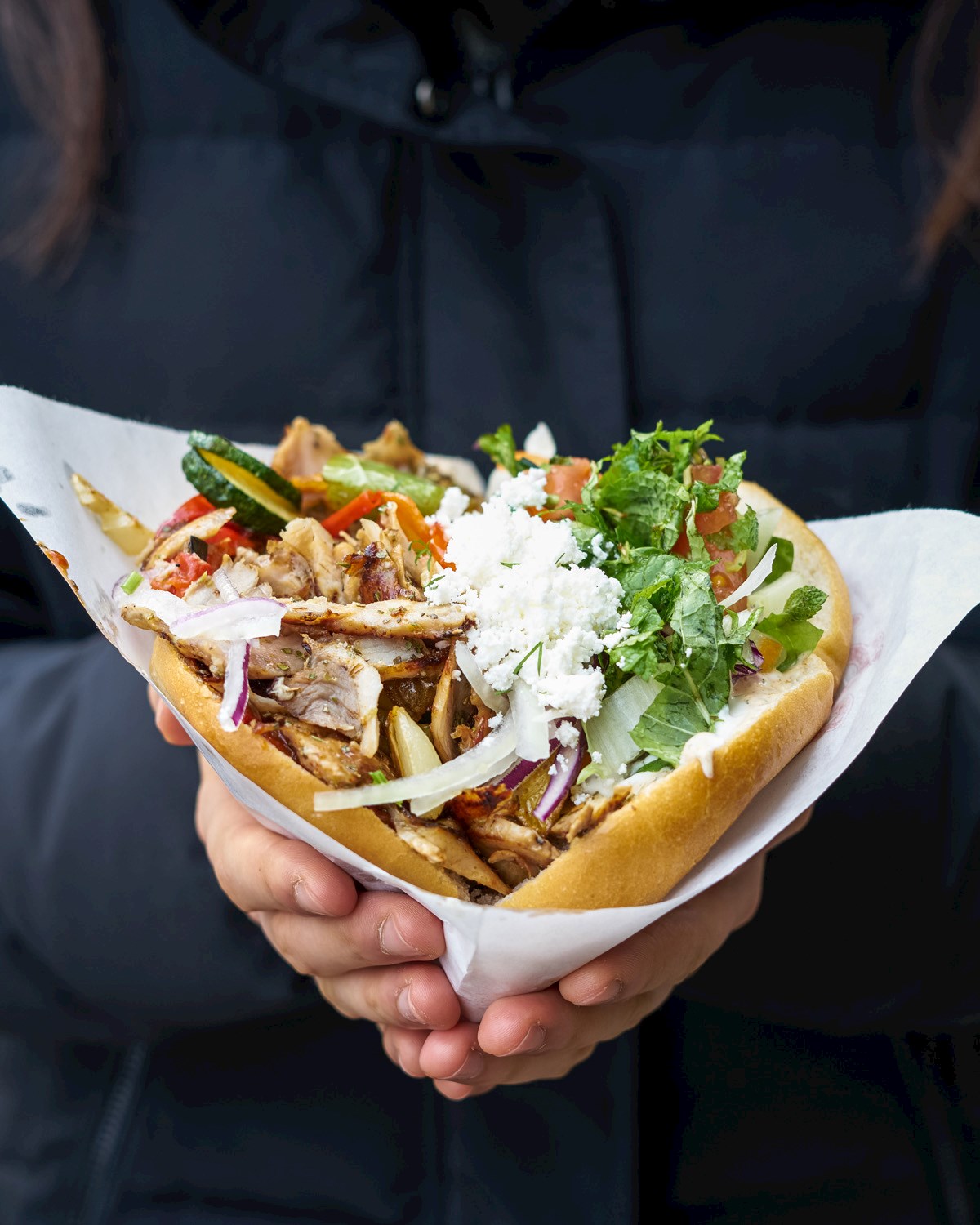 Credits: shutterstock
Credits: shutterstock
Flatbreads are packed with meat and vegetables like red cabbage, iceberg lettuce, carrots, cucumber, pickles, and of course, tomatoes and red onions. Sauces are also a must; whether white and mild (garlic- or herb-based) or red and spicy (pepper-based), it’s up to one’s preference.
And to round it up, a few fried potatoes, some crumbled white cheese, and some herbs and spices.
So, to conclude, what are the differences?
In Türkiye, meat is king, and other ingredients should not overpower it, while in Germany, almost anything goes. Lamb or beef and lamb are the preferred choice in Türkiye, while in Germany, chicken reigns supreme, along with beef, and vegetarian options are also on offer.
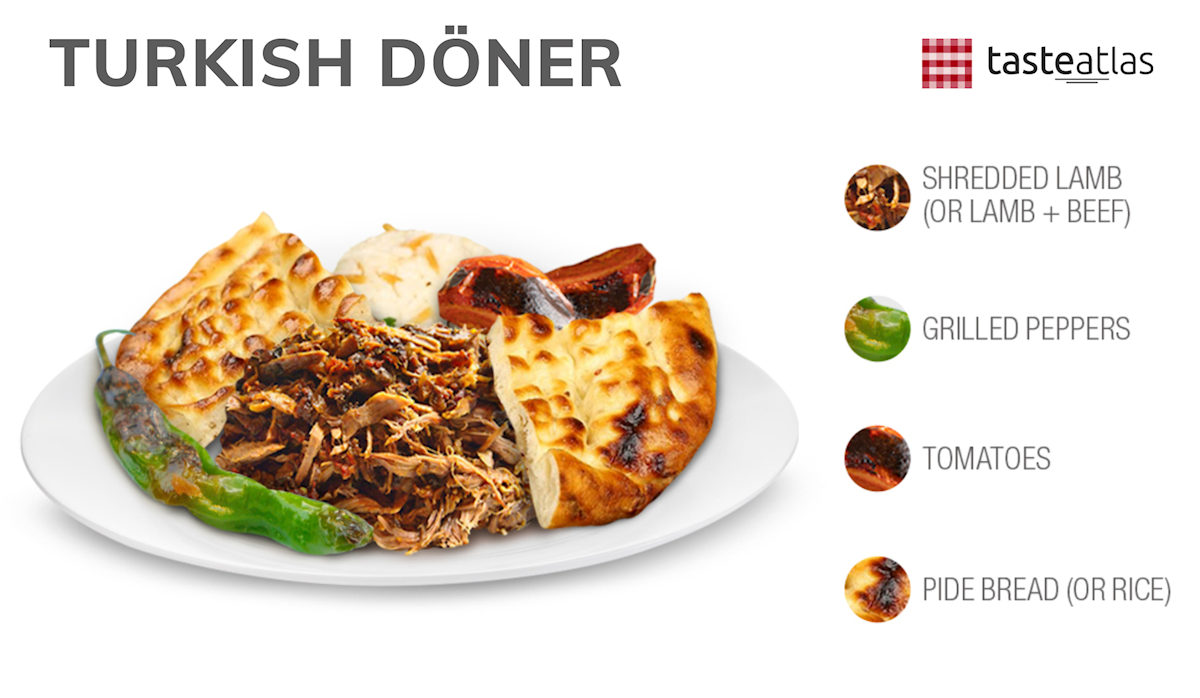 Credits: TasteAtlas
Credits: TasteAtlas
So, when in Türkiye, don’t be surprised if you get döner served on a plate and with very few extras. However, Turks are trying to compete with Germans, so they do add things like French fries and pickles, but they still keep their version quite subdued.
The German döner is a completely different animal. Although rooted in Turkish tradition, it has become a dish in its own right and a true representative of Berlin and its people.
 Credits: TasteAtlas
Credits: TasteAtlas
Today, döner is a worldwide phenomenon, available at nearly every street corner. Further variants have also developed in other countries — the Canadian donair, for example. Besides Germany and Türkiye, döner is a mainstay in Austria, the UK, Finland, France, and most other countries of the Western world.
Read more:
Check out 750 street foods around the world
